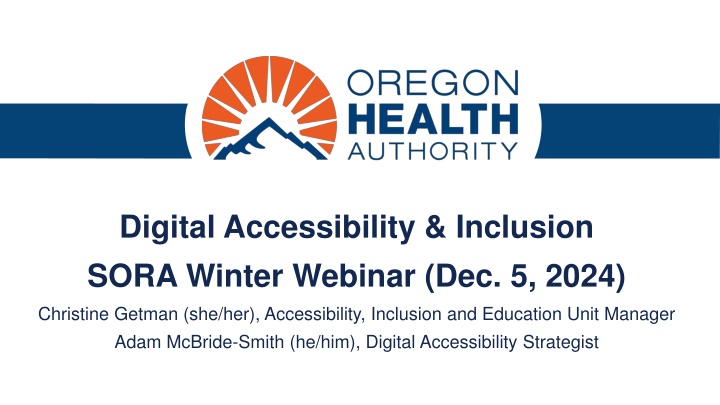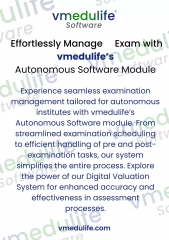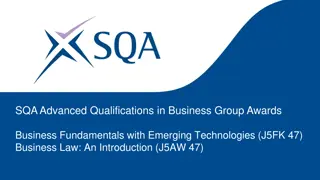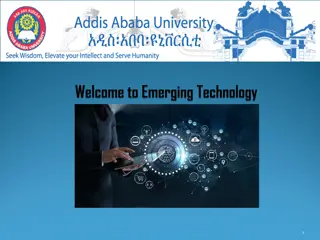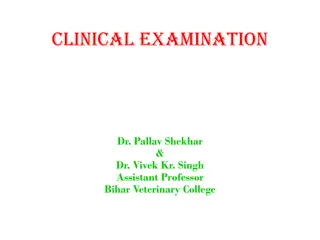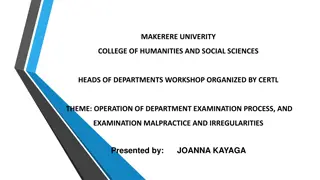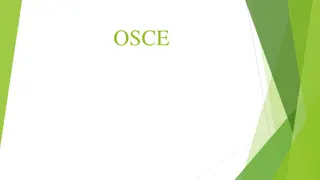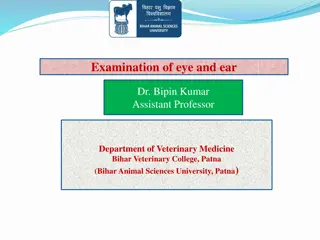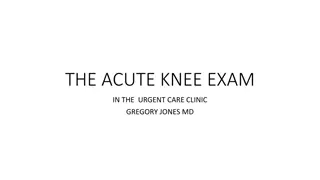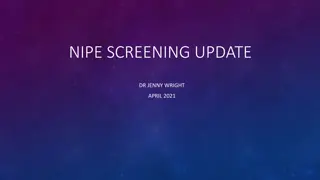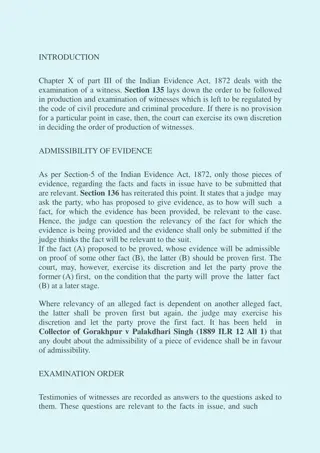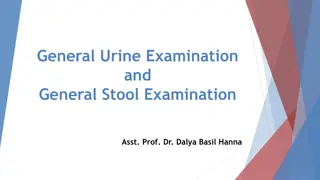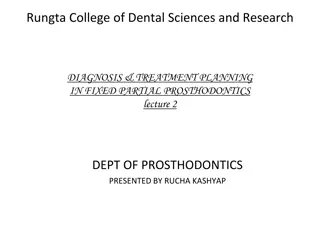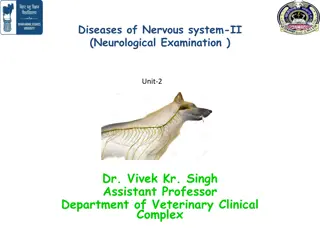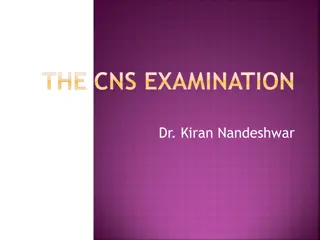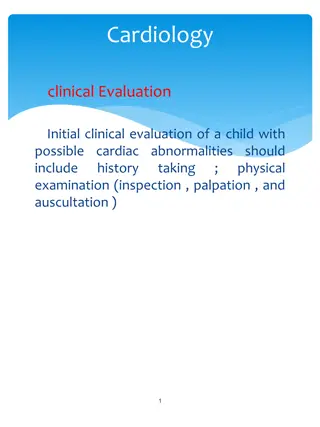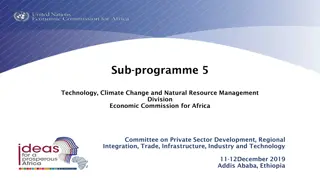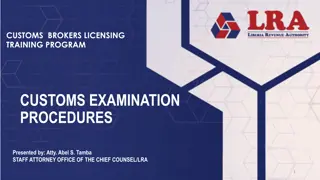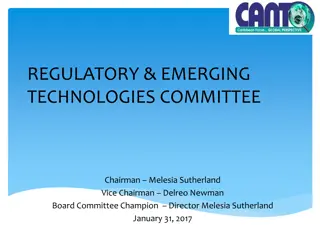2017 Examination of Emerging Technologies Impact on Education
Funded by the US Department of Education, the DIAGRAM Center's report explores the impact of emerging technologies on education. Through in-depth research and community input, the report aims to increase accessibility and knowledge for students with disabilities.
Download Presentation

Please find below an Image/Link to download the presentation.
The content on the website is provided AS IS for your information and personal use only. It may not be sold, licensed, or shared on other websites without obtaining consent from the author.If you encounter any issues during the download, it is possible that the publisher has removed the file from their server.
You are allowed to download the files provided on this website for personal or commercial use, subject to the condition that they are used lawfully. All files are the property of their respective owners.
The content on the website is provided AS IS for your information and personal use only. It may not be sold, licensed, or shared on other websites without obtaining consent from the author.
E N D
Presentation Transcript
Digital Accessibility & Inclusion SORA Winter Webinar (Dec. 5, 2024) Christine Getman (she/her), Accessibility, Inclusion and Education Unit Manager Adam McBride-Smith (he/him), Digital Accessibility Strategist
Outline What is digital accessibility and who needs it? Models and values Federal rules and guidelines Approach to the rules through policies Policy implementation Example: Accessibility in Data Visualizations 2 2
What is digital accessibility? Working Definition: Digital accessibility is an approach to technology and content design that involves thinking specifically about the experiences and needs of people with disabilities. By designing for these needs, and by following the guidance and leadership of people with disabilities, we arrive at technology that works better for everyone. 3
Who needs accessible content? Blind and deafblind people People with low vision People with color-blindness People who have motor disabilities People with cognitive or learning disabilities Deaf and hard-of-hearing people Speakers of English as a Second or Additional Language People with Temporary and Situational Disabilities 4
Common forms of Assistive Technology (AT) used to access digital content Screen readers (JAWS, NVDA, VoiceOver, Narrator) Text-to-speech software (Read Aloud, Speachify) Speech-to-text software (Dragon Naturally Speaking) Magnification Software (ZoomText) Dark mode and other customizable color palettes Keyboard Access Switch Devices Onscreen keyboards 5
What are Models of Disability? How disability interacts with medical fields, social culture, educational and government institutions, and the workforce Sets of beliefs that explain social attitudes and actions toward disability 6 6
Applying the models Medical: person needs fixing Charity: person is a victim Economic: person isn t productive Moral: person deserved disability Social: society and barriers are disabling Identity: person is unique and celebrated 7 7
In our work: Medical and Social In our work: Medical and Social Medical Model: The person with the disability is the problem; they need to change (treatment, cure culture) Social Model: The social or physical environment is a barrier; it needs to change (build ramps, create accessible documents) 8 8
Timeline: Federal Rules, guidelines, and agency policies November 2022: The Digital Accessibility Policy Workgroup (OHA/ODHS) begins meeting July 25th, 2023: The DOJ s Notice of Proposed Rulemaking on Accessibility of Web Information and Services of State and Local Government Entities was published (aligned with WCAG 2.1) October 5th, 2023: WCAG 2.2 becomes the w3c s recommended standard. April 24th, 2024: The DOJ s final rule was published. May 9th, 2024: A rule on Nondiscrimination on the Basis of Disability Under Section 504, published by the US Health and Human Services Department (HHS). 9 9
About the new DOJ and HHS Rules DOJ rule applies to all digital content produced by or for the state of Oregon Important note: This includes content that the state procures from vendors. HHS rule covers all entities that receive federal healthcare money. 10 10
Details of the New Rules Set a technical conformance standard of WCAG (the Web Content Accessibility Guidelines) 2.1 Levels A and AA. Provide a 2-year timeline for states (the compliance deadline for the DOJ rule is April 24th, 2026) Explicitly cover conventional electronic documents, defined as: Portable document formats (PDFs) Word processor file formats (such as Word docs) Presentation file formats (such as PowerPoint presentations) Spreadsheet file formats (such as Excel files) 11 11
The Web Content Accessibility Guidelines (WCAG) WCAG: often pronounced Wi-cag Developed by the World Wide Web Consortium (or w3c) Provides technology-neutral accessibility standards for digital content Many countries around the world now reference WCAG as a technical standard for digital accessibility There are four iterative versions of WCAG: 1.0, 2.0, 2.1, and 2.2 There are three conformance levels of WCAG: A, AA, and AAA 12
More about WCAG WCAG 1.0 was published in 1999. It was superseded by WCAG 2.0 in 2008, and by WCAG 2.1 in 2017. WCAG 2.2 was elevated to Recommended status on October 5th, 2023, making it the current standard. WCAG 2.2 has 56 Success Criteria (SCs) at A and AA levels. All versions of WCAG 2 (2.0, 2.1, and 2.2) are additive and backward-compatible. Section 508, which covers federal web content, was aligned with WCAG 2.0 (Levels A and AA) in 2017. The DOJ and HHS rules are aligned with WCAG 2.1 (Levels A and AA). OHA and ODHS policies are aligned with the most recent Recommended version, WCAG 2.2 (Levels A and AA). 13
New OHA and ODHS shared policies on Digital Accessibility Content Creation and Sharing (ODHSOHA 010-029) Hardware, Software and Systems (ODHSOHA 010-030) Developed by Digital Accessibility Policy Workgroup over 2 years Workgroup participants from OHA and ODHS, as well as representatives from DAS, Oregon Broadband, Oregon Commission for the Blind, etc. 14
Digital Accessibility in Content Creation and Sharing Policy 15 15
Content Creation and Sharing Policy Ensures any form of digital content created by the agency and provided either internally or externally is accessible Digital content adheres to Web Content Accessibility Guidelines (WCAG) 2.2 Levels A and AA. Includes websites, reports, surveys, dashboards, and documents. 16 16
Digital Accessibility in Hardware, Software and Systems Policy 17 17
Hardware, Software and Systems Policy Requirements for procuring or building ICT solutions in alignment with Web Content Accessibility Guidelines 2.2 (WCAG), level A and AA Guidelines. Information and communications technology (ICT) solutions describes information technology content, applications, and services All hardware and software Agency or 3rd party created multimedia and electronic content Electronic hardware, software and documents used by ODHS and OHA 18 18
Exception 1: Archived Web Content Archived web content means content that meets all of the following conditions: 1. It was created before the date the public entity is required to comply (April 24, 2026), reproduces paper documents created before the date the public entity is required to comply, or reproduces the contents of other physical media created before the date the public entity is required to comply; 2. It is retained exclusively for reference, research, or recordkeeping; 3. It is not altered or updated after the date of archiving (minor redactions for purposes of confidentiality are allowed) 4. It is organized and stored in a dedicated area or areas clearly identified as being archived (this can include a section of a website or page that is designated as an archive, or an entire site or database designated as an archive). 19
Exception 2: Preexisting Conventional Electronic Documents Preexisting conventional electronic documents means conventional electronic documents, that is portable document formats (PDFs) Word processor file formats (such as Word docs) Presentation file formats (such as PowerPoint presentations) Spreadsheet file formats (such as Excel files) that are available as part of a public entity's web content or mobile apps before April 24, 2026 UNLESS such documents are currently used to apply for, gain access to, or participate in the public entity's services, programs, or activities. 20
Other Exceptions Content posted by a third party where the third party is not posting due to contractual, licensing, or other arrangements with a public entity. (so, a social media post by a 3rd party would be excepted, NOT an app or a website built by a vendor under contract). Preexisting social media posts (i.e. posted before April 24, 2026) 21
What we are doing to implement these policies Launching an Oregon.gov page to communicate requirements, progress, and guidance on digital accessibility: https://www.oregon.gov/oha/Digital- Accessibility/Pages/index.aspx. Project management support on both the OHA and ODHS sides. At OHA, we are working on creating a charter and steering committee. The AIE Unit is in the process of hiring to help with digital accessibility. Begin surveying and remediating websites, apps, and documents in early 2025 on a division-by-division basis. Offer rolling training schedule for accessible content creation in 2025. 22
Accessibility for Data Visualizations (checklist) Use clear titles Check your focus order early in the process Include text summaries Ensure that data tables are enabled for data visualizations Consider moving large blocks of text out of dashboards and onto web pages Support mobile accessibility and reflow Keep it simple Choose widgets and elements carefully Include easily findable information about accessibility features Use the latest available version of your platform to take advantage of accessibility-related updates Use text that supports readability Retest dashboards after new releases Choose colors carefully Learn more about accessibility for data visualizations More details available at our Accessible Data Visualizations Quick Guide Add alt text to meaningful images and objects If using content that displays only on hover, such as tooltips, ensure that the same information is available elsewhere as real text 23 23
Consider moving large blocks of text out of dashboards and onto web pages Blocks of text included in a dashboard often can t be highlighted, copied, searched, magnified, easily translated, or otherwise customized for readability (a WCAG requirement). Embedding a data dashboard on an HTML websites helps you avoid this problem. See this example from the City of San Francisco COVID-19 data and reports. 24 24
Data tables and accessibility Screen reader users need to be able to interact with data visualizations, and data tables are a common way to make this possible. In Power BI, data tables are enabled by default. In Tableau Public access to the View Data window must be enabled. It can help screen reader users to be reminded of the key commands for accessibility. For example, Alt + Shift + F11 opens data tables in Power BI. 25 25
Non-text Contrast SC 1.4.11 (Level AA) Cannot discern the edges and low contrast Visible labels and sufficient contrast 26 26
Use of Color SC 1.4.1 (Level A) Goal: Color is not the only way of distinguishing information. Use information in addition to color, such as shape or text, to convey meaning. __ = missing data X = missing data __ = complete = complete 27
Large Blocks Of Text Consider moving large blocks of text out of dashboards and onto web pages Blocks of text included in a dashboard often can t be highlighted, copied, searched, magnified, easily translated, or otherwise customized for readability (a WCAG requirement). Embedding a data dashboard on an HTML websites helps you avoid this problem. See this example from the City of San Francisco COVID-19 data and reports. 28 28
Helpful Links OHA s Accessible Data Visualization Toolkit A Template for Accessible Data Visualizations from San Francisco Digital & Data Services Urban Institute's Do No Harm Guide: Centering Accessibility in Data Visualization Chartability: testable questions for ensuring data visualizations are accessible 29 29
Who benefits from digital accessibility? All of us! Who can uphold digital accessibility? 30
You can get this document in other languages, large print, braille or a format you prefer free of charge. Contact Christine Getman at Christine.M.Getman@oha.oregon.gov or 971-610-2240 (voice/text). We accept all relay calls. Equity and Inclusion (E&I) Division Civil Rights, Learning and Inclusion (CRLI) Section Accessibility, Inclusion and Education (AIE) Unit 421 SW Oak Street, Suite 750, Portland, OR 97204 971-673-1240 https://www.oregon.gov/oha/ei/Pages/index.aspx 31
